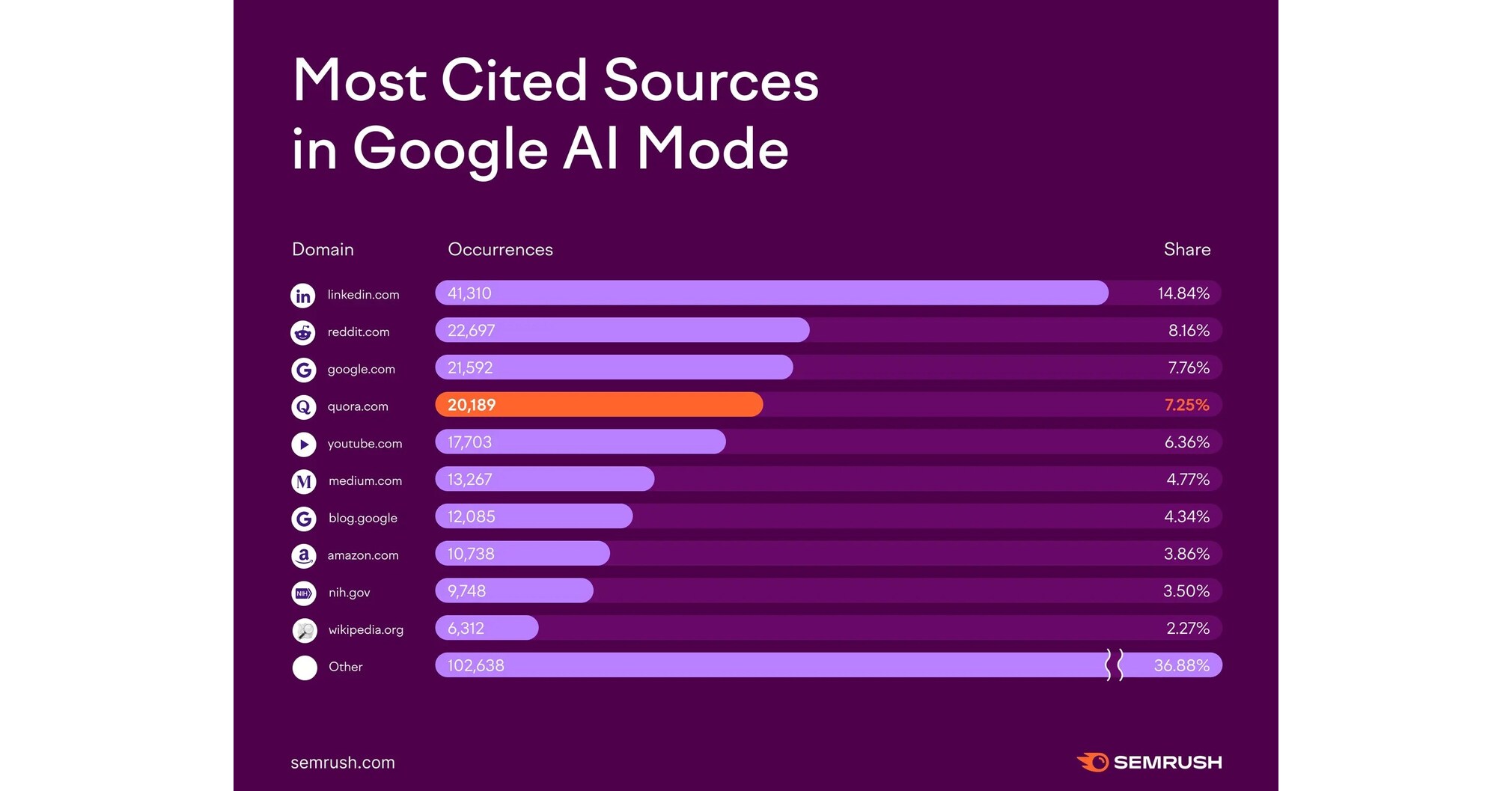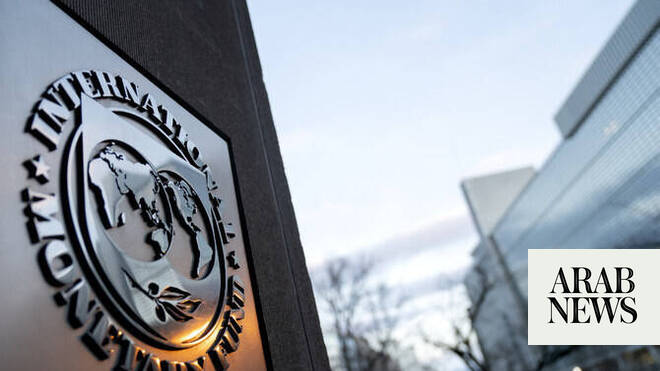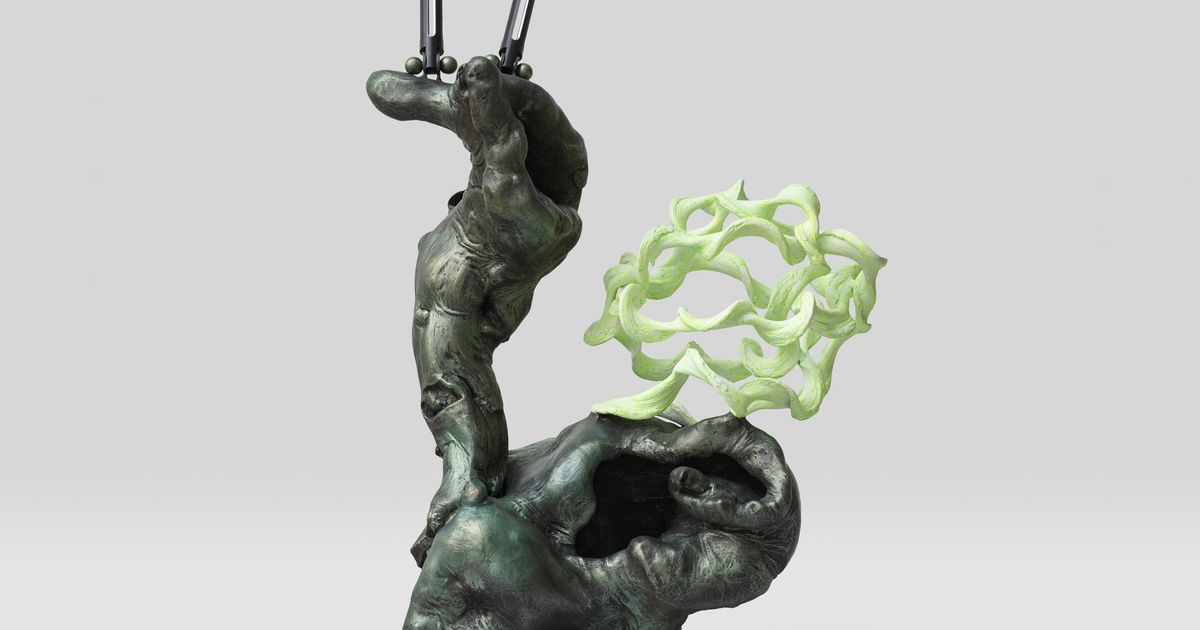New Semrush research ranks Quora #4 among Google AI Mode sources, reinforcing its #1 position in AI Overviews.
MUMBAI, India, Oct. 9, 2025 /PRNewswire/ — Quora continues to stand out as a leading source of trusted…

New Semrush research ranks Quora #4 among Google AI Mode sources, reinforcing its #1 position in AI Overviews.
MUMBAI, India, Oct. 9, 2025 /PRNewswire/ — Quora continues to stand out as a leading source of trusted…

AFG vs BAN: Afghanistan began their three-match ODI series against Bangladesh on a winning note, clinching a five-wicket victory at the Sheikh Zayed Cricket Stadium in Abu Dhabi on Wednesday, October 8. Rashid Khan and Azmatullah Omarzai starred…

Many Americans choose food based on cost and nutrition, but personal values, such as animal welfare and environmental concerns, also shape what ends up on our plates.
Now, researchers at the Gerald J. and Dorothy R. Friedman…

ISLAMABAD: Pakistan’s ruling coalition faced fresh strain on Wednesday…

Guan Xiao: Teenager
Kunsthalle Wien presents the first solo exhibition in Austria by Guan Xiao. Comprising an entirely new body of sculpture and painting, it takes what Guan Xiao describes as an “ambiguous life stage“ as a starting point for…

A recent analysis reveals that older adults with prior incarceration report worse physical and mental health than their peers, even if they were incarcerated in the distant past. The findings are published in the Journal of the…

Taylor Swift might be up…

PETALING JAYA – The seven mixed-heritage football players at the centre of controversy over their legitimacy in playing for Harimau Malaya had fulfilled citizenship criteria under the Federal Constitution, says Datuk Seri Saifuddin Nasution…

Unlock the Editor’s Digest for free
Roula Khalaf, Editor of the FT, selects her favourite stories in this weekly newsletter.
HSBC has made a HK$106bn ($13.6bn) offer to buy out minority investors in Hong Kong lender Hang Seng Bank as it presses ahead with a restructuring plan.
Europe’s largest bank has offered HK$155 a share, a 30 per cent premium over Hang Seng’s closing price on Wednesday, to take the unit fully private and delist its Hong Kong-listed shares. The all-cash deal values Hang Seng at HK$290bn.
HSBC’s share price was down as much as 7.3 per cent by mid-morning in Hong Kong after it said it would not make share buybacks for the next three financial quarters in order to generate the cash needed for the deal.
The bank returned $11bn to shareholders in 2024 through share buybacks alone.
HSBC took control of Hang Seng during a banking crisis in 1965 and owns about 63 per cent. It ranks among the global bank’s most significant acquisitions alongside the UK’s Midland Bank in 1992.
Hang Seng has been hard hit by Hong Kong’s recent property slump, with its non-performing loan ratio at 6.7 per cent at the end of June — an all-time high.
HSBC had already kicked off a restructuring at Hang Seng, bringing in a new chief executive in October.
“This investment is primarily to enhance the capabilities of Hang Seng in terms of additional products and additional scale and technology investments, as well as obviously giving customers the same access to our international network,” said group chief executive Georges Elhedery.
Elhedery took on the role of chief executive last year and kicked off a worldwide restructuring that included shutting HSBC’s investment bank in the US and Europe and pulling out of some markets.
He denied that the move to tighten HSBC’s grip on Hang Seng was sparked by concerns over its commercial real estate exposure.
“We remain constructive on the outlook for the [Hong Kong real estate] sector in the medium to long term. So we see this as a short-term credit cycle,” he said.
HSBC considers Hong Kong a “home” market along with the UK. The global bank has been under pressure amid greater tension between China and the west, with its largest shareholder Ping An launching a campaign in 2022 for it to split up its Asian and western businesses.
In an internal email to staff Elhedery added that he expected “an opportunity to create greater alignment across HSBC and Hang Seng Bank that may result in better operational leverage and efficiencies”.
Some analysts greeted the move positively as a simplification measure for HSBC. “Either Hang Seng Bank should be separate and a competitor or it should be fully owned, so this move makes sense,” said Michael Makdad of Morningstar.
Hang Seng has traditionally operated as a more retail, mass market franchise while HSBC targeted wealthier clients and businesses.
Hang Seng recorded net income of HK$6.9bn in the first half of 2025, compared with HK$10bn in the same period the previous year.
In a call with journalists Elhedery added that there might be “opportunities for alignment between the two entities”, including offering Hang Seng customers more access to HSBC’s international network.